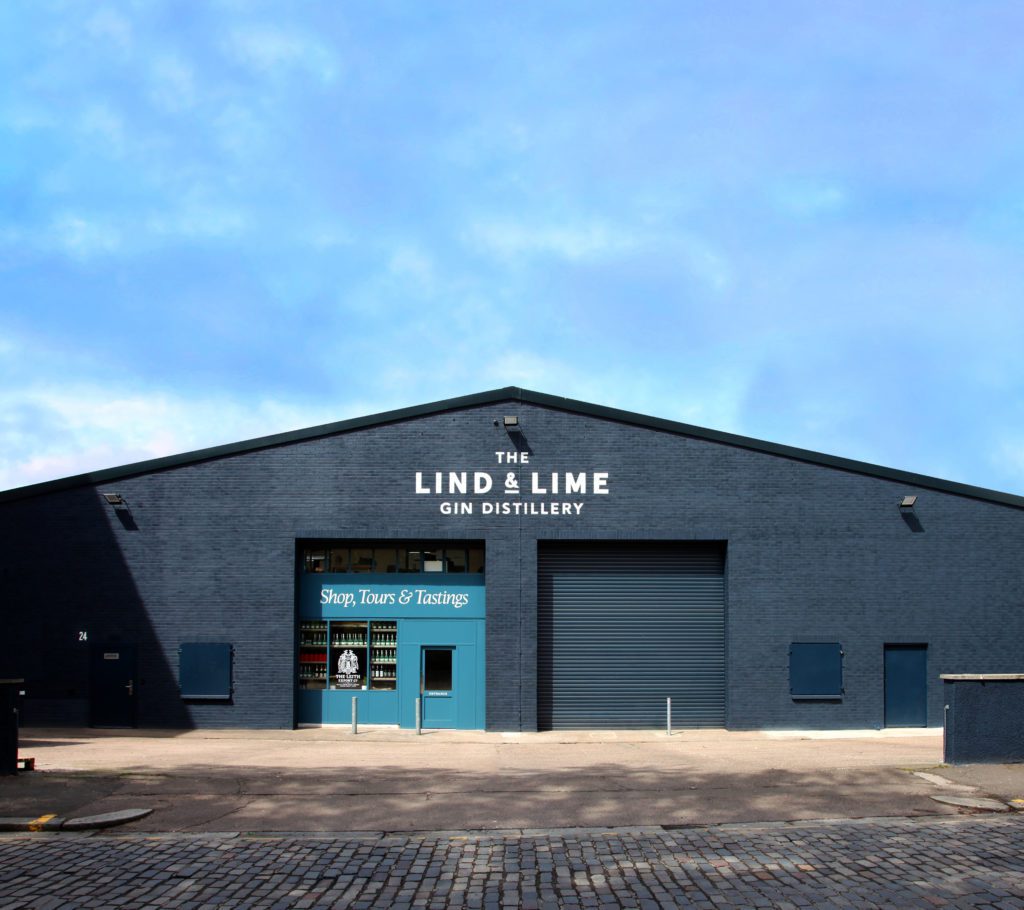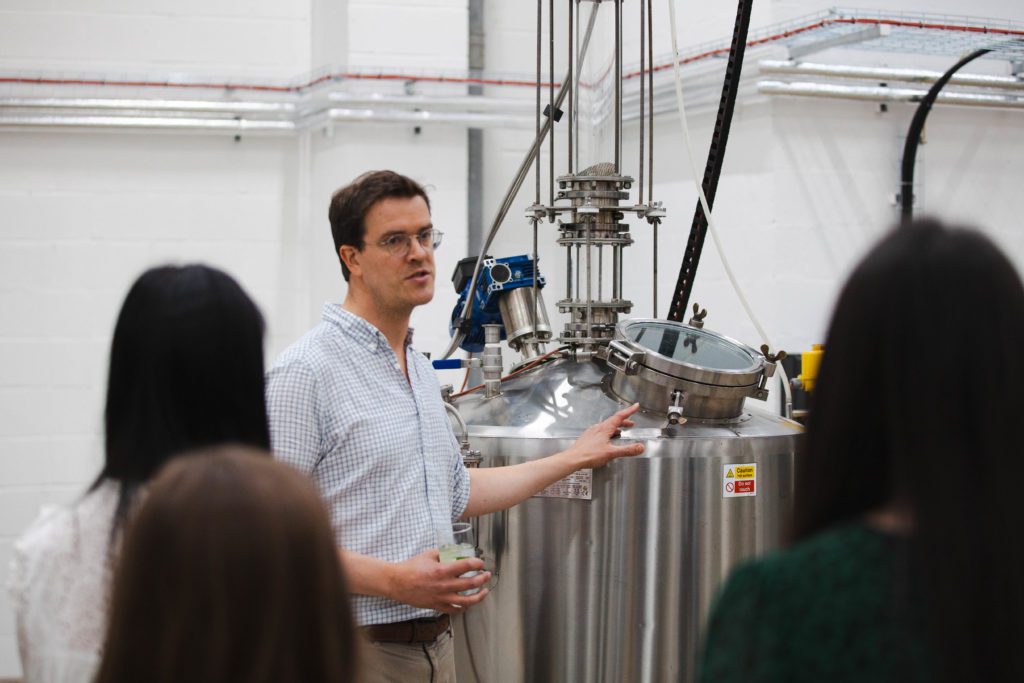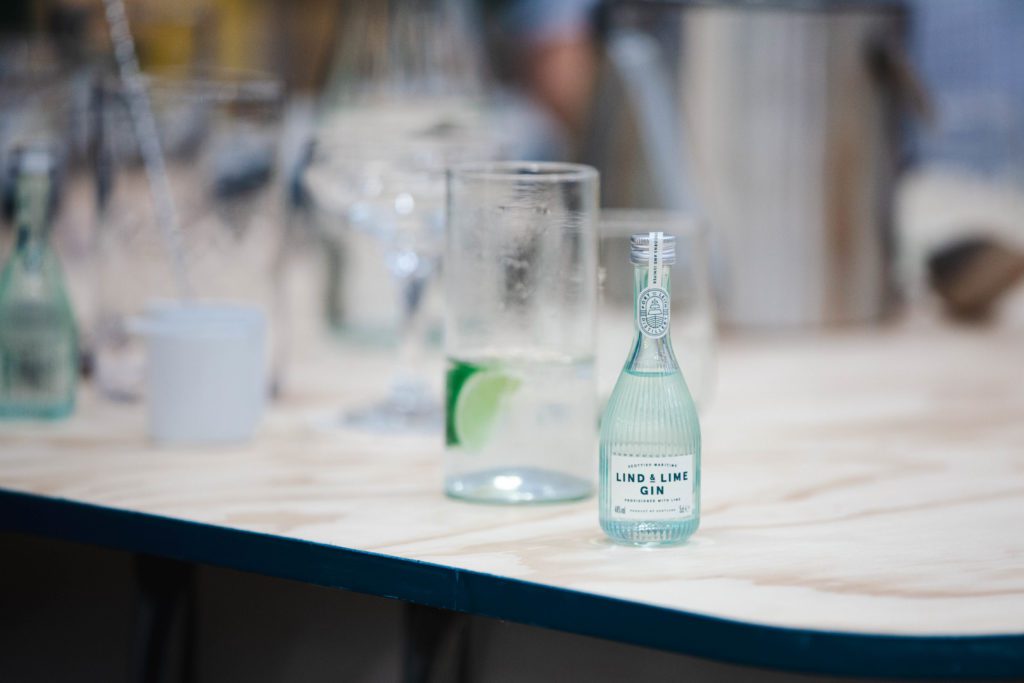“Welcome to our gin distillery”, says Ian Stirling. “This is the third tour I’ve done, so you’re not Neil Armstrong, or Buzz Aldrin, but the other guy, I can’t remember his name”.
The new Lind & Lime distillery, which Stirling, 39, owns with his life-long friend and business partner, Paddy Fletcher, 40, is box fresh.
“We’ve literally just opened,” he says. “If any of you remember Challenge Anneka in the Nineties, the last few days have been just like that”.
There’s the charcoal and blue exterior of the Coburg Street venue, and, just inside, their shop, where you can invest in various drinks under their Muckle Brig corporate identity and The Leith Export Co trading arm. Alongside books on booze, the merch includes sherry and port from Port of Leith Distillery, as well as La Garde Ecossaise Champagne, and that increasingly cult four-year-old gin in its ridged bottle, which even features on a snazzy T-shirt.
Eventually, there will be blended Scotch in here, since their vertical Port of Leith whisky distillery beside Ocean Terminal Shopping Centre is due to open relatively soon.
Wine is on the cards too.
Their business is expanding rapidly, and this new premises is an upgrade from their original Tower Street Distillery.
We’re here for their 75-minute tour, which takes place on Thursdays, Fridays and Saturdays at various times.
The experience starts in a low-fi manner, beside the prop that is a navy dresser, where Stirling can tell us about the origins of their invention.
“When we set out we thought the world didn’t need another gin”, he says. “There was pineapple, raspberry and weird and wonderful flavours out there. However, we wanted one that set a benchmark for London dry gin and that’s the seed of what we do”.
They also wanted to celebrate their neighbourhood.
As Stirling says, “Leith was for centuries Scotland’s gateway to the world. In the 20th century, all Scottish trade passed through here”.
After researching local history, they were intrigued by the story of James Lind and used him as a namesake.
He shows us a slightly shonky sketch of Lind, drawn by Stirling's wife.
“We couldn’t afford the rights to the portrait but we’re going to get a bigger one and put it on the wall,” he says. “He was a ship’s surgeon in the Royal Navy on the HMS Salisbury and in 1747 conducted one of the first clinical trials - he took a systematic approach to solve the problem of scurvy”.
Lind wrote A Treatise of the Scurvy - “an amazing read, a real romper of a book”, says Stirling.
Thus, scurvy-beating lime found its way into their spirit, though they didn’t want the “Fruit Pastille” juice flavour, but something sharper, so they used the skins instead.
They also chose six other botanicals and, as part of the tour, you get to try a few - to sniff, or nibble. We pass round jars and inhale deeply, while clutching our ice cold gin and tonics, which you get as part of the tour, in our spare hand. As well as juniper, which is obligatory in gin, these herbs and spices include coriander seed, liquorice root and the powdery smelling orris root. According to Stirling, the latter is their priciest ingredient.
“The biggest buyer of orris root is Chanel. We source all our ingredients organically, and this is the hardest - we wait for the harvest and buy as much as we can”, he says.
Once they’d created their ideal recipe, they worked on the distinctive bottle.
Since his previous job was in the wine industry, Stirling wanted a wine bottle shape, and they both liked the blue tint of recycled glass. Eventually, they found an Italian manufacturer who could create the look they were after, and could also include a tribute to Leith Glass Works, which has its name in relief on the base. Apparently, nearby Salamander Street was once the location of a glassworks. “It’s an Easter egg tribute to that iconic industry,” says Stirling.
Finally, there was the name.
“Originally we were going to call it the Antidote but then a French company launched a gin called L’Antidote and they had lots of lawyers so we backed out of that”, says this entrepreneur.
Lind & Lime was born. “Finally, you have the gin exactly where you want it to be. I didn’t stop staring at this thing for several weeks. We had conservative aspirations, but it’s now exported to 24 countries around the world”.
They produce it using their still, which looks dinky in this warehouse of a space. They don’t have a name for it yet, though Sputnik has been mooted. Stirling shows us how it works - “a bit like boiling a kettle” - and tells us about the expensive organic grain alcohol they buy from Switzerland.
That’s the science bit, and the next element of the tour involves filling your own miniature of Lind & Lime. These are very cute, but they make zero money on them, at a fiver a pop. I manage not to break or damage anything when I fill it, using the robotic nozzle. Then we zip on the tiny metal lids using another machine, before manually sticking on the labels. Mine is squint.
We finish our tour at the bar, where there are chandeliers made of empty gin bottles. Stirling demonstrates how to mix a gimlet, using pre-measured sugar syrup, lime juice and gin. I’m feeling a bit woozy as he tells us about the future of the distillery and new projects in the pipeline.
I may be losing my focus, but at least nobody will leave this tour with scurvy.
Tours £25, including two drinks and mini gin, see www.lindandlime.com



